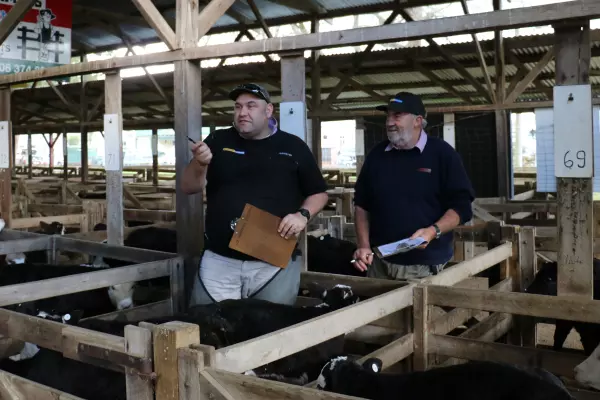BusinessDesk investments editor Frances Cook answers emails from readers on questions about money. Below, you'll find her expert opinion. Send your own questions to [email protected].
Hi Frances
You talked in a recent podcast to someone who invested in shares, in order to get financial independence.
What’s a realistic amount to be investing each week that could help achieve this goal?
Thanks,
J
Hi J,
I’ll run through some numbers but first I have a really important point to make. Financial independence isn’t the sort of thing where you have to hit a goal of $2 million and you either succeed or fail.
Someone who saves or invests $10,000 is more independent than someone who has $100.
If you’re able to take a six-month break from work, you’re far more financially independent than most, even if you can’t have full early retirement.
So, while I’ll run through what financial independence can look like and what it takes to get there, please don’t see this as a black or white, achieve it or not situation.
Every bit of financial security you can give yourself through investments and savings is worth having. Consider this as more of a sliding scale.
What do you need
A lot of this will depend on your lifestyle.
If you want enough money to be financially independent and able to live off shares income like the people on the Cooking the Books podcast episode you mentioned, then it also depends on how much you need to pay your bills each year.
If you're happy living a fairly simple life and have a house where the mortgage is paid off, then $30-40,000 a year might be enough for you. That’s called Lean FIRE (Financial Independence, Retire Early).
Some people want to travel and keep living it up, which might take $80,000 or more a year. That’s called Fat FIRE.
Then there’s Barista FIRE, where you plan to have enough to cover the bare bones costs of your life, but you might also pick up part-time or casual work along the way to fund fun things.
Or, you can plan things based on your current life expenses, at least as a starting point.
Go through your bank account for the past month and add up all your “needs” spending. This is personal, so you can add in any “wants” that you think you’d like to keep in your financially independent life.
After you’ve got the final monthly number, multiply it by 12 – that’s what you’ll need in a year.
Some maths
Most of us don’t like maths, but there’s some light back-of-the-envelope maths to come. The golden rules of financial independence are 25x and 4%.
Whatever the yearly number you think you'll need, multiply it by 25 – you'll want to have that amount saved in shares. That’s because it needs to grow and make money so you can live off the profits.
Now, stop! Don’t panic.
You’re not saving all that money in cash from your pay each month.
Because you’re putting it into shares as you go, those shares will be earning money alongside your savings, which also adds to the nest egg. The money from your investments will boost you along your journey to financial independence.
So, it might look like a big chunk of change, and it is, but it’s more achievable than it looks at first glance.
The idea is that then you can take out 4% of that money every year, and your nest-egg should last forever. That 4% will be the yearly number you worked out earlier.
Shares make about 7% per year, after taking out things like fees or the impacts of inflation. So, this figure gives you a cushion for any bad years in the market or inflation going up more than expected, for example.
I don’t have space to get into the weeds here, but it’s a fairly safe amount to withdraw. Lots of experts have checked it out and given the 25x, 4% theory a big tick.
How long will it take?
How long it takes depends on how quickly you want to reach financial independence.
If you have more time you can do this with much smaller amounts of money. If you want to get there quickly, you’ll have to put more in.
So, let’s just pick a number and run some scenarios based on it, so that you have an idea.
Say you decide $40,000 a year is good for your financially independent life. You multiply it by 25 and see you need a round $1,000,000 invested in shares to get you there.
If you decided, well, I’m 20 and starting my career now, and I want to reach financial independence at the traditional retirement age of 65, then $75 a week invested into shares would get you $1,028,697.52 by retirement.
You would only have put in $162,000 of that, by the way. The rest is compounded returns over the 45 years you were investing.
If you want the same result in 20 years, then $525 a week would get you to $1,033,086.41. You’ve put in $504,000, and the rest is compounded returns.
As a side note, you can immediately see why I say that when you’re young and broke is the perfect time to invest. The impact of time means you can do far more with less.
If you wanted to hit financial independence in 10 years, then we’re talking a fairly big savings commitment, because time isn’t able to do as much of the heavy lifting for you: $1,625 a week will get you to $1,077,682.94 in 10 years, but you have to put in a whopping $780,000 of that yourself.
Let me go back to the beginning, though. You can have whatever version of financial independence that you choose.
You don’t have to fully retire – you can create a version where you have a nice side income that allows you to work in a lower-paying job that you enjoy more, or that requires less time.
You can take mini-breaks of six months or so using the income from investments.
You could live a very frugal life, which means you need even less than $40,000.
Financial independence will look different to everyone, and whatever version is achievable to you is still very much worth having, in my opinion.
It's your call
So, while I’ve gone through the numbers here to answer the question, I’d like to bat the ball back into your court now. Use the compound interest calculator that I used, so that the maths is easy – you can find it here.
Put in whatever number you think is reasonable for you to invest each week, whether that’s $20, $50, $100, or more. Set the interest rate to 7%, as that’s a reasonable expectation for an average return from shares.
Then just play around with it. See how far you get, and what could work for you.
At the risk of tooting my own horn, I wrote a book about how ordinary people like you and I can achieve financial independence. It's called Your Money, Your Future and it has a lot more strategies to make this an achievable goal than I can fit into this column.
So, if you'd like to know more, check that out. I won't be offended if you choose to get it out of the library rather than buy it. Whatever works.
I personally started by investing $20 a week into index funds. I’ve had a few pay rises since then and can invest more than that these days. But if I’d only ever stuck with doing $20 a week, that still would have been worth doing.
If anyone else would like to listen to the podcast episode that inspired this question, here it is:
Send questions to [email protected] if you want to be featured in the column. Emails should be about 200 words, and we won't publish your name. Unfortunately, Frances is not able to respond to every email received, or offer individual financial advice.
Information in this column is general in nature, and should not be taken as individual financial advice. Frances Cook and BusinessDesk are not responsible for any loss a reader may suffer.














